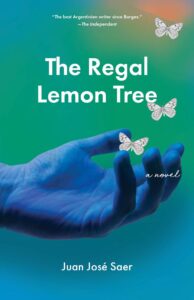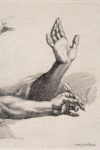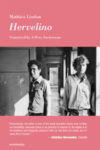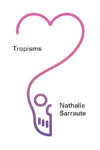
[Open Letter; 2020]
Tr. from the Spanish by Sergio Waisman
I think of the late Argentine author Juan José Saer as a writer of light and shadow, but The Regal Lemon Tree — the most recent of his novels to be published in English by Open Letter and translated by Sergio Waisman (originally published as El Limonero Real in 1974) — is a book of sound.
The novel takes place over the course of a single New Year’s Eve: Wenceslao wakes up and fails to convince his wife to join him at his extended family’s for the holiday. He goes without her, rows his canoe across the river to his brother-in-law’s, and spends the day preparing and eating meals. The extent of the plot is that his wife refuses to join them; she hasn’t left the house in six years since the death of their son. At one point her sisters and nieces pile into two canoes to cross the river to retrieve her, but she won’t come. Wenceslao and his family drink a lot of wine, they walk, they dance, he naps . . . And these scenes — this will come as no surprise to anyone who’s read Saer — repeat. The novel is punctuated by section breaks with the sentence, “Dawn breaks / and his eyes are already open,” after which the day begins again. In each manifestation, scenes expand and contract, and we travel with Wenceslao in flashbacks and dreams.
This structure is present in other works of Saer’s, and it’s reminiscent of the novels of Alain Robbe-Grillet, especially Jealousy. Saer’s 1980 novel Nadie Nada Nunca (in English, Nobody Nothing Never, translated by Helen Lane and published by Serpent’s Tail in 1993) is a glorious homage to Jealousy, down to the smashed bug. Saer’s repetition of scenes in The Regal Lemon Tree and in other novels places his characters (and his readers) in a series of time loops, unsure of what’s past, present, or future. Whatever the characters are trying to sort out they sort out obsessively, returning in memory and in real time to the same thing, over and over. And we go with them, each iteration releasing new resonance. This repetition is paired with Robbe-Grillet-like precision and extraordinary detail which we can see most clearly in Saer’s descriptions of landscape, particularly of light and shadow. For example, early in the novel, Wenceslao joins a few family members who sit around a table in his brother-in-law’s yard:
[Wenceslao] leans his shoulder back against the tree trunk. They are all inside the sphere of shade, in turn surrounded by an even larger sphere of morning sunlight, whose slow ascent is beginning to heat the ground that did not have sufficient time, overnight, to fully cool off from the glaring sun of the day before. The sun will climb and keep climbing until midday, when it will shine down vertically, in search of the center of everything, erasing shadows for a fraction of a second, and then begin to decline. But first it will waft the turbid and undulating image of rivers and estuaries through the air, creating watery mirages on the paved road leading to the city . . . From where he is standing, if he turns his head to the left a bit, he can see the road: an irregular, wide, yellow strip, bordered by green, fading away in a straight line toward a horizon of trees. It is currently empty. When he turns his head in the other direction, toward the house, Wenceslao sees the whitewashed adobe walls already starting to glint with reflected sunlight.
This passage serves as a microcosm for the novel in a few ways. First, time is represented through the movement of the sun, but this movement is predictive (hasn’t happened yet) as indicated by the author’s switch to future tense. In the same breath as projecting forward, the day’s future heat is left over from yesterday in the still-warm ground. Wenceslao sees that the road “is currently empty,” and as we get this scene and others again, we know that the road will be populated in distant memory as Wenceslao and his brother-in-law travel on it with horses and in the near future when their nieces, as “watery mirages,” slowly walk down it toward the house. Too, and most important for The Regal Lemon Tree, Saer includes the authorial layer of directing Wenceslao’s point of view with phrases like “if he turns his head . . . he can see,” instead of simply describing what it is Wenceslao sees in a close third person narration. The sunlight “erasing shadows for a fraction of a second” and then causing new shadows to form mimics the undoing done by each retelling. I’m reminded of the phrase “infinitesimal shudder instantaneously suppressed” from Samuel Beckett’s late prose text, “Imagination Dead Imagine” — a phrase and a title fitting for this novel.
Though the passage above is typical of Saer, in The Regal Lemon Tree, Saer’s penchant for exactitude breaks in ethereal flashbacks and dreamscapes. These tonal and formal shifts, most often prompted by and manifested in sound, make The Regal Lemon Tree an excellent introduction to Saer’s work for folks who might be hesitant to read an entire novel of crystalline repetition. I don’t want to overexplain or spoil some of the stranger moments in the text, so trust me that things get a little weird here.
Like Wenceslao turning his head to see something, there is much head tilting and body positioning as characters listen. In a memorable flashback, Wenceslao (as a child) and his father walk through a forested area enveloped in white fog. His father “turns his head, slightly, as if, unable to see anything written in the fog, he expected now to hear some sound coming from it instead.” He tells Wenceslao to stay put while he goes farther down the path, and Wenceslao, alone in this mist, thinks he hears something:
For two or three minutes the silence is so complete that, when he first hears the small ringing, Wenceslao thinks that it is an illusory sound effect of the silence itself — as if he could only really hear it if there were some other sound to contrast with it — to such an extent that at first he doubts if he has really heard it. Then he is certain he has not heard it.
Because he can’t see where the sound is coming from, he’s not sure there’s a sound at all. The scene ends with him frightened and shrieking, lost, until his father finds him again. It’s an uneasy feeling to be unsure if you’ve heard something, especially when you can’t locate its source. Sound, after all, is mostly invisible. In his book on this very uneasiness in works of art and literature, Sinister Resonance, David Toop writes that “sound is a haunting, a ghost, a presence whose location in space is ambiguous and whose existence in time is transitory.” This ghostliness occurs because sound lacks a defined space; it’s without an edge you can touch or see. Toop goes on:
[S]ound’s boundaries lack clarity, spreading in the air as they do or arriving from hidden places, and its significance potentially vague, closer to perfume or smoke . . . This relative lack of form creates perplexing relationships between the properties of states: inside and outside, material and immaterial, the way thoughts become sound through speech, and external sounds become sensory impressions that may be thoughts as they pass through the ears and outer membrane into awareness.
Wenceslao struggles with these properties of sounds as he moves through Saer’s landscape of precision. Back at the dinner table on New Year’s Eve, Wenceslao tries to pin sound to physical space as it’s defined by light. He feels as though the shade from the trees creates a sphere of silence:
Even if voices and sounds can be heard inside this zone, it is as if only the meaning of the voices and the sounds were actually heard there, and not the sounds themselves. Meanwhile, the sounds outside the sphere (the flowing water, the creaking of the pump) can be heard, clear and concise.
Later, there is a “strata of sounds.” Of the repetitive clopping of horse feet, Wenceslao thinks to himself, “You cannot tell the difference between the sound and the memory of the sound, because the sound resumes before the memory.” As scenes layer and echo one another, we’re constantly reminded that Wenceslao’s wife is absent because she still grieves for their deceased son. While Wenceslao has given up on trying to convince her to come, and really is just trying to have a nice day with his family, these two ghosts envelop him not unlike the ringing fog of his childhood. Like echoes, like horse clops, the day comes at us again and again, and we look for lines between things, spheres of light and shadow to clarify the situation. We might wonder: Is one day really repeating in this novel, or are we living through a blend of the last six New Year’s Eves?
There’s a bit of magic here, too, and levity. The titular lemon tree, for example, seems to be immortal: it flowers and produces fruit all year round. Black and white butterflies appear out of nowhere and buzz around a lantern. The river forms a whirlpool thick with mud; Wenceslao wrestles within it while underwater for an indefinite period of time. There’s music and dancing and grilled lamb and bottles and bottles of wine. The Regal Lemon Tree — alongside and through its uneasiness, repetition, and exacting prose style — is lush with sensory imagery and surprise. Through this work’s simultaneous stringency and formlessness, in sharp daylight and in foggy shadow, Saer poses the beautiful questions — what the tree’s constant fruiting asks: What’s really seen and heard? What’s real and when?
Kelly Krumrie‘s prose and poetry are published in Tarpaulin Sky Magazine, DIAGRAM, La Vague Journal, Black Warrior Review, and elsewhere. She is currently a PhD candidate in Creative Writing at the University of Denver where she serves as a Prose Editor for Denver Quarterly.
This post may contain affiliate links.







